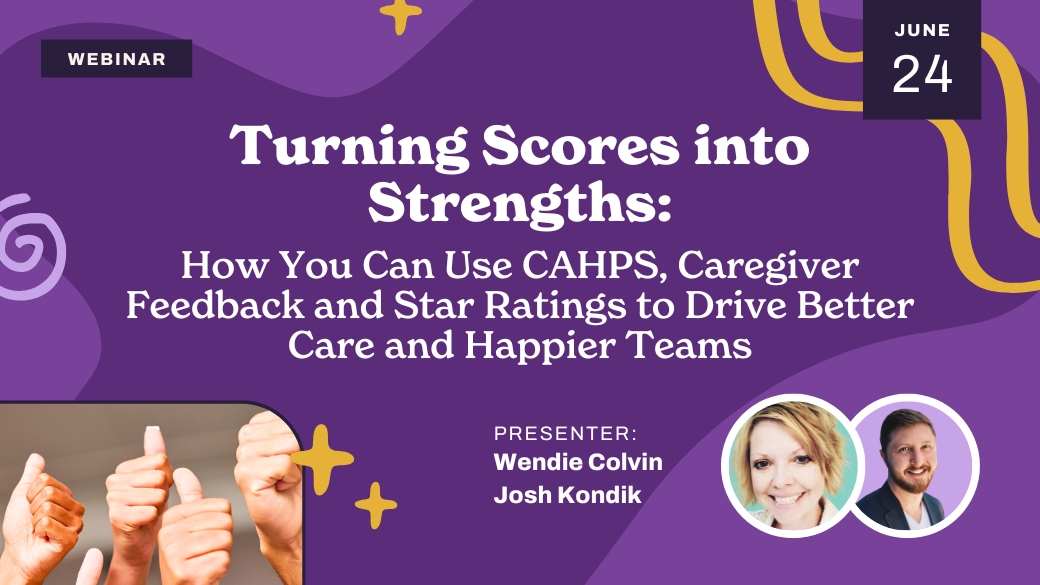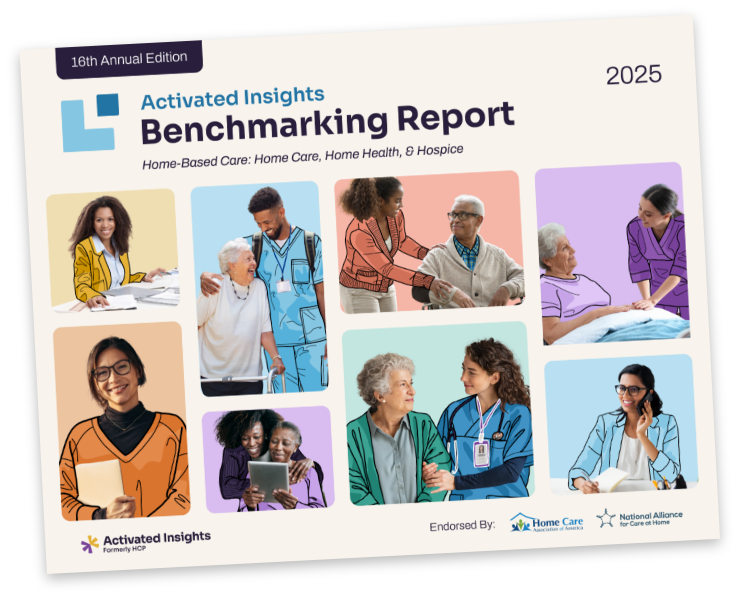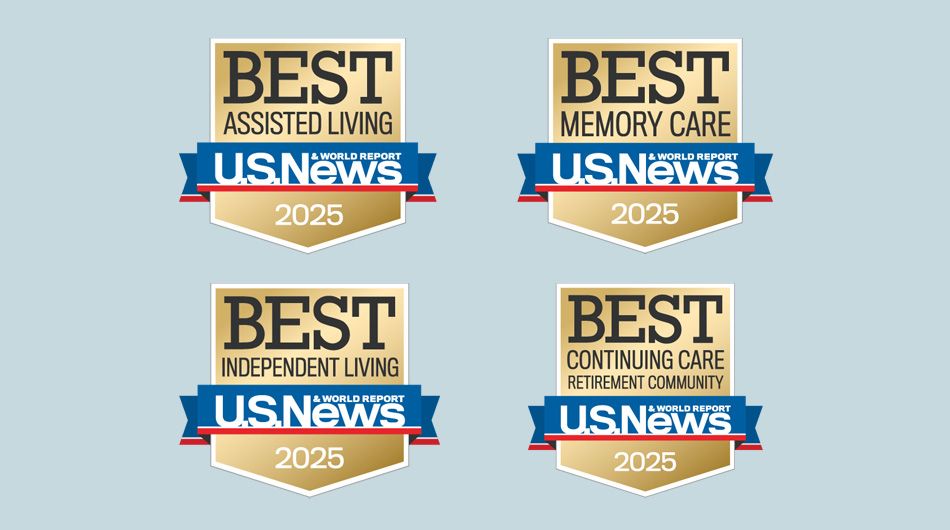Only 22% of the 3 million older LGBTQ+ adults in the US feel that they can be open about their sexuality and gender identity with long-term care staff. That’s 2,340,000 adults who don’t feel able to access affirming, inclusive care. Here’s how to help them.
ccording to the United States Census, as of 3 years ago, there were more than 1 million households throughout the country headed by same-sex couples. Given the recent advances in marriage laws and domestic protections for same-sex couples, that number will likely only increase in the coming years.
Unfortunately, as new laws slowly continue to extend rights and protections to many lesbian, gay, bisexual, transgender, and queer (LGBTQ) individuals, only 22% of older adults feel they can be open about their LGBTQ status with nursing home and other care staff.
Reports estimate that there are currently around 3 million LGBTQ adults over the age of 50; by 2030, that number will grow to approximately 7 million.
The math is simple. There is a nearly 80% chance of providing better care to clients and patients by welcoming LGBTQ adults into a safe, equitable, and inclusive care environment. The question remains: how do we do it?
Step 1: Educate yourself on the LGBTQ+ community and their unique barriers to accessing care
We understand that change needs to happen when education drives our decision to improve. The first step to providing a welcoming and safe space for care is understanding the real-life experiences and barriers to healthcare of the LGBTQ community.
For example, LGBTQ older adults face many of the same concerns during the aging process when seeking care as anyone else (multiple comorbidities, several medications, impaired mobility). However, aging LGBTQ adults may have the added fear of wondering whether they will be turned away or receive subpar treatment due to negative past experiences with previous healthcare providers. The loss of family and friends after coming out, discrimination and violent bullying throughout their youth, and being denied access to loved ones (including children and romantic partners) are only a few of the unique barriers that have made life particularly difficult to navigate as an LGBTQ person.
Did you know there are currently no consistent or explicit federal anti-discrimination protections for LGBTQ people? Imagine owning an agency that explicitly states that LGBTQ+ individuals are always offered excellent care, safety from danger, neglect or abuse, protection from verbal and physical harassment, and the freedom to express their gender identity without it affecting their access to healthcare. What seems like such a simple and implied statement is, in reality, a welcome breath of fresh air to many in the LGBTQ+ community.
To provide better care, it’s also important to familiarize yourself with common terms used in the LGBTQ+ community. For example, you may have seen a “+” or “*” included at the end of LGBT or LGBTQ. This refers to all other identities associated with the LGBTQ+ community that are not specifically covered by the other five initials. Review a glossary of LGBTQ terms and refer back to it regularly.
Step 2: Create and implement guidelines for your agency and employees
Once you’ve educated yourself and identified the barriers facing older LGBTQ+ adults, it is time to practice what you have learned and open the doors that were unknowingly closed at your agency.
How do we do that? We create and implement guidelines. The great news? You do not have to start from scratch.
The Joint Commission published a set of guidelines to encourage inclusivity and aid in building bridges to healthcare over the disparities that many LGBTQ+ individuals face. Here are just a few of the guidelines that leadership can implement to provide and promote an inclusive environment for LGBTQ+ clients and patients:
- Create or locate a nondiscrimination policy, and then adopt it into practice! Be sure the policy guards patients and clients from discrimination based on personal characteristics, including sexual orientation and gender identity.
- Create or locate a policy ensuring equal visitation. It is essential to expand “family” to include “family of choice.” Keep in mind that, unfortunately, for many LGBTQ+ clients and patients, disclosing their sexual orientation or gender identity has resulted in familial alienation. Allowing patients and clients to choose who is at their bedside is a fantastic way to ensure inclusivity and support.
- Keep your staff culturally competent by monitoring your organization’s efforts to provide regular training and patient-family-centered care to LGBTQ+ patients, clients, families, and communities.
- Hold yourself and others accountable. Create or adopt clear reporting practices for uncomfortable topics such as discrimination, abuse, and disrespectful treatment.
- Bring out your allies and set them front and center. Identify and give requested resources and support needed to staff and physician champions who are experts or experienced with LGBTQ issues. These individuals are critical to your organization’s success as a listening body and change consultants.
While leadership plays a key role in creating an inclusive environment, all staff must be stakeholders in upholding the provisions of care for LGBTQ clients and patients. Here are a few more guidelines outlined by the Joint Commission to help:
- Construct a welcoming environment that includes LGBTQ+ clients and patients. As you decorate your waiting rooms and other common areas, include memorabilia and décor with LGBTQ+ families, clients, and patients (i.e., rainbow flags, LGBTQ+ friendly magazines, family portraits that show many different blended families, etc.)
- Never make assumptions about a patient or client’s sexual orientation or gender identity based on appearance. When unsure, ask what pronouns a person uses and respect what is shared with you.
- Promote disclosure of sexual orientation and gender identity, where appropriate, and when a client or patient is comfortable. Remember that coming out is an individual process and should never be rushed or forced.
- Provide information and guidance for specific health concerns experienced by LGBTQ+ patients and become familiar with online and local resources available.
- Recognize your assumptions, biases, and misconceptions. Allow an open mind and be prepared for new views and understandings to alter your perceptions. Change can be uncomfortable, but it does not have to be scary or unproductive.
Step 3: Recognize diversity in, and create a safe work environment for, your staff
As you move forward to create a welcoming environment for your clients and patients, do not neglect your staff’s needs and unique experiences. Your LGBTQ+ caregivers and healthcare staff may experience the same discrimination, refusals, and hurdles as many of your patients and clients. Implement policies and guidelines that protect staff from discrimination, creating a safe space for staff to be respected for who they are and the skills and talents they bring to the table.
Caring for vulnerable communities is an ongoing process.
Forging a path into unknown territory can be challenging and frightening. However, it is my sincere belief that you will find the rewards both personally fulfilling and patient-serving in a way that you have not previously experienced.
Stay up to date on new research and healthcare developments by including LGBTQ+ resources as a regular part of your continuous learning:
- National Resource Center on LGBT Aging
- SAGE (Services & Advocacy for GLBT Elders)
- Transgender Aging Network
- LGBT Aging Project
For more detailed information and training on caring for LGBTQ+, check out our 1-hour course, Providing Care for LGBTQ+ Clients. In 2022, it is being updated to include important information on transgender, queer, and other subsections of this vulnerable community. Cheers to a new year of forging new paths and achieving new heights for our patients, clients, and caregivers!
Read more:
Related Posts







